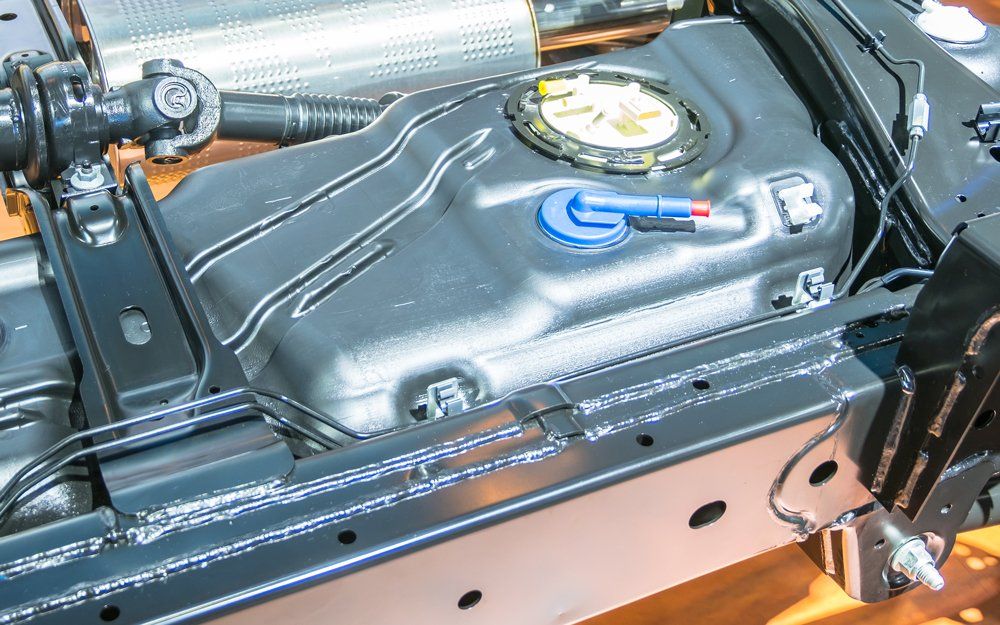Common Questions About Fuel Tank Rust Issues
- By Admin
- •
- 12 Mar, 2020

What's the only component on your car that carries around ten gallons or more of highly flammable liquid? It might not be a challenging quiz question, but that doesn't stop many car owners from ignoring the importance of their car's fuel tank. This seemingly simple component is essential to your vehicle's safe and reliable operation, and it needs attention like any other part of your car.
Modern cars generally use plastic tanks, but a quarter of road vehicles in the US still have metal tanks. While driving a vehicle with a metal fuel tank is not inherently dangerous, you need to understand its greatest threat: rust. Recognizing and addressing the signs of fuel tank rust is crucial to keeping your vehicle safely on the road.
Why Do Fuel Tanks Rust?
The typical metal fuel tank uses a galvanized steel construction. While the galvanization process helps to resist rust, all steel eventually succumbs to corrosion. Since steel contains iron, the material rusts as the metal reacts with oxygen in the presence of moisture. Although the time for this process can vary, it is mostly inevitable.
Of course, not all fuel tanks spring leaks. The more moisture your tank comes into contact with, the more likely it is to develop severe rust on a timescale that matters. Road salt can hasten the process since salty water allows the oxidation process to occur more quickly. While Douglas County residents rarely have to worry about significant road salt, humidity can be a concern for rust.
In addition to environmental issues, fuel quality concerns can also lead to tank rust. Moisture can enter a fuel tank due to contaminated gas or even a loose fuel filler cap. High humidity increases the likelihood that another problem may allow water to enter the tank. Once in the tank, water tends to settle at the bottom, where it can rapidly accelerate the oxidation process.
What Are the Signs of Tank Rust?
The most obvious sign of a rusty tank is a strong smell of gasoline, but this is an extreme symptom that indicates your tank has already failed. Never drive a car when the smell of gas is present. Any fuel odor is indicative of gasoline vapors inside the passenger cabin, which is potentially a very hazardous situation.
Rust can cause issues long before it punches holes in your tank, however. If the interior of your tank is rusting, then rust flakes can find their way into the rest of your fuel system. These small flakes can clog your fuel filter and even damage fuel injectors. Over time, this can lead to a lean running condition as not enough fuel reaches your engine's combustion chamber.
How is Rust Addressed?
The first step to addressing rust is realizing that it exists. While rust on exterior panels is easy to spot, fuel tank rust is a much subtler problem. If you drive a classic car (or any older vehicle), then it is essential to have your tank occasionally inspected for rust problems. Once discovered, you should never ignore fuel tank rust.
Depending on the severity of the problem, it may be necessary to remove and replace the fuel tank entirely. For less severe cases, it may be possible to weld in a patch instead. Properly cleaning the interior of the tank may also be sufficient if the rust is minor, and there is no threat of the rust penetrating through to the outside.
If you suspect a rust issue in your fuel tank, Kell Radiator Service can provide the inspection and repair support you need to keep your vehicle on the road. We can repair your tank if possible, and replace it if necessary. Visit us today to make sure that there's not a dangerous problem lurking in your car's fuel tank.

